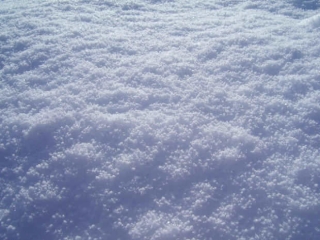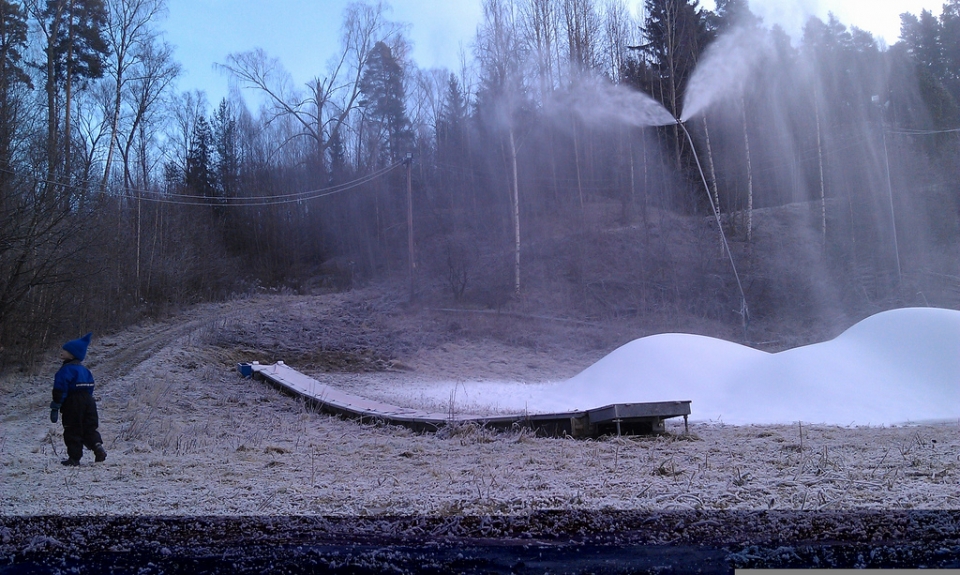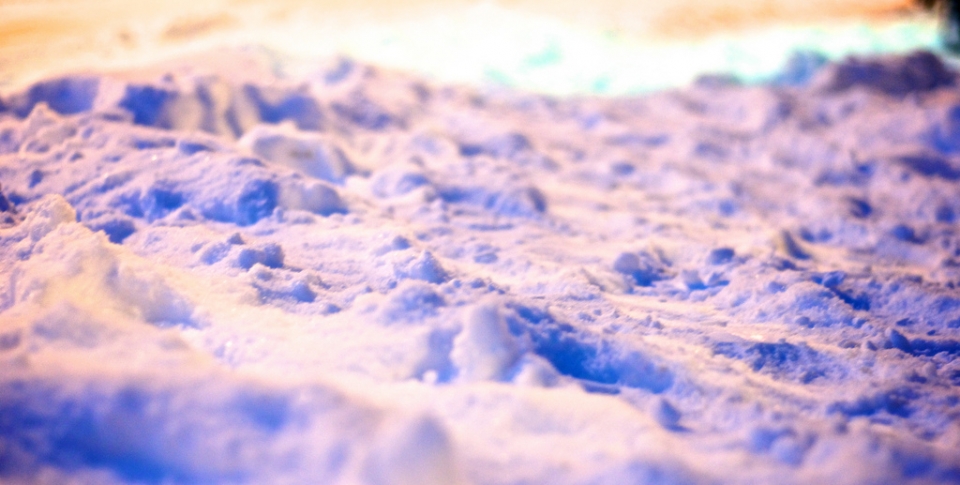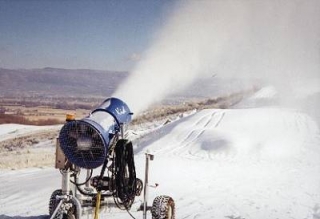Now with two or three heavy snowfalls, ski resorts are able to keep their slopes in good condition throughout the season thanks to this miracle of technology. Let's see how it is done.
The first thing we must keep in mind is that "artificial" snow is real snow, without any chemical ingredients, the only difference is that it is obtained by machines, which is why in recent years it has been is tending to call it "produced" snow. Snowflakes are just ice crystals. Naturally, water evaporates from rivers, seas and lakes. This moisture retained in the environment, when certain conditions of air saturation occur, falls to the earth again, in the form of rain or, if the cold is sufficient, in the form of snow. As they fall, the original crystals absorb more water, thus creating the famous structures that we all know.

What machines do is shorten this process. There is no evaporation phase, but the water is pumped from a reservoir, lake or river to the famous canyons. In them it encounters pressurized air that will spray it outwards. Now the prevailing cold will do the rest, freezing these tiny droplets of water before falling to the ground. The result: snow. Although if we observed it under a microscope we would find irregular balls and not the structure described above, especially due to the speed of the process.
But not all snow produced is equal. What's more, it can be adjusted to our desires and needs. The first thing is to decide the amount of water. Although dry snow, with little water, is usually better for skiing Due to its sliding characteristics, it is often more interesting to make wetter snow. The main reason is the greater volume of it, which makes it possible to cover more quickly an area that has been highly eroded by the passage of skiers. Or at the beginning of the season, to get a good base, later adding dry snow on top. Fundamental to keeping the slopes in good condition is to enjoy sufficiently cold temperatures and to carry out correct work with the slope grooming machines.

The second important factor is the frequency with which snow is made. Simply put, "fresh" snow is much more fun and easier to ski. The ideal then would be to make a large volume of very heavy snow at the beginning of the season, with which to obtain a large base, and then produce drier and lighter snow as frequently as The weather in the area allows.
- Water
The beginning. Although it may seem impressive that many stations have canyons on more than 80% of their skiable area, the amount of snow is much more important strong> that it can produce in a certain time, since this will indicate its ability to open as soon as possible or cover a certain area with fresh snow throughout the season. And all this is determined by the amount of water available and the pumping capacity of your facilities.
But, once that water is available, what should we do? What makes it turn into snow? It will have to be cooled before pumping it into the cannons. In purely physical terms, cold does not exist but rather there will be a transfer of heat from the body with a higher temperature to the body with a lower temperature. When water freezes, it loses heat until it completely crystallizes. It is assumed that this occurs at a temperature of 0ºC, but the reality is that this is only valid for very specific conditions (distilled water, 1 atm pressure). br />

When we look at a thermometer we are getting the "dry" temperature. Knowing it may be enough to know whether to put on a coat or not, but it is not enough to produce snow. We must know the humidity of the environment.
To give an example with the human body. With a temperature of 25ºC and 95% relative humidity We feel hot, and our body will react by sweating. This sweat evaporates, but on a humid day the environment will not be able to absorb as much of it as on a drier day, for example, with 30 degrees and 20%. of humidity we will lose heat faster, so the sensation of heat will be less, even if the temperature is not.
In this same way the snow production process is affected. When the humidity is 100%, that is, the air is saturated, the humid and dry temperatures coincide at what is called the dew point. But when the amount of water is small, even if our classic thermometer is above 0º, snow can be produced due to the high capacity of the environment to absorb humidity, and therefore easily freeze the droplets sprayed by the cannon. The limit is usually around 4ºC for very low relative humidities.

- Air
The key to making everything work. Air serves a dual purpose in snow production. On the one hand, it "breaks" the water into particles of the appropriate size so that they freeze, propelling it outside. On the other hand the same jet of air starts the freezing process. Let's see how.
The first thing we will have to understand is what happens when it is compressed. Air is a gas, more specifically, a mixture of gases. Unlike liquids, it can be compressed so that the same volume of air can occupy much less space, with a consequent increase in pressure. The gas laws give us a relationship between pressure, volume and temperature that tells us that when we increase the pressure so does the temperature. But this temperature does not necessarily remain high, but can be reduced.
When a compressed gas expands, the process occurs in reverse. A large amount of mechanical energy is given up and a lot of heat is absorbed. This is why air is so important. What mechanical energy does is break the water into small particles and the heat is absorbed from the water, that is, it cools it.
In this same way the snow production process is affected. When the humidity is 100%, that is, the air is saturated, the humid and dry temperatures coincide at what is called the dew point. But when the amount of water is small, even if our classic thermometer is above 0º, snow can be produced due to the high capacity of the environment to absorb humidity, and therefore easily freeze the droplets sprayed by the cannon. The limit is usually around 4ºC for very low relative humidities.

- Air
The key to making everything work. Air serves a dual purpose in snow production. On the one hand, it "breaks" the water into particles of the appropriate size so that they freeze, propelling it outside. On the other hand the same jet of air starts the freezing process. Let's see how.
The first thing we will have to understand is what happens when it is compressed. Air is a gas, more specifically, a mixture of gases. Unlike liquids, it can be compressed so that the same volume of air can occupy much less space, with a consequent increase in pressure. The gas laws give us a relationship between pressure, volume and temperature that tells us that when we increase the pressure so does the temperature. But this temperature does not necessarily remain high, but can be reduced.
When a compressed gas expands, the process occurs in reverse. A large amount of mechanical energy is given up and a lot of heat is absorbed. This is why air is so important. What mechanical energy does is break the water into small particles and the heat is absorbed from the water, that is, it cools it.












